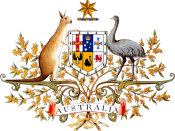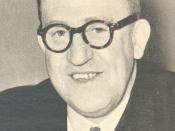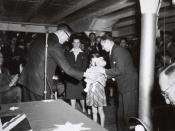The post-war period was a time when Australia crystallised its culture, beliefs and practices into a concept called "The Australian Way of life". This concept provided a common understanding for Australians at an uncertain time. It can be seen as a reaction to various events and influences from the post war period and its adoption, in turn, influenced post war immigration policies and attitudes towards immigration. This will be examined by considering a number of primary documents as well as other sources.
According to White (1979:529) the term "the Australian way of life" became popular in Australia in the period after World War II. It marked a change in the way Australia defined itself. Before World War II, in the 19th century, the emphasis was on physical and racial aspects, that is, the Australian type. This is exemplified in Ward's (1958) description: "the typical Australian is a practical man, rough and ready ....
willing to have a go" (pp1-2). The culture and social patterns were essentially seen as British but modified to the local conditions. There was no definition of a peculiarly Australian culture. It was only during and after WW II that the concept of a way of life that was particular to Australia and that embodied what was important for Australians, emerged in to popular usage. The values which defined it were not very clear. Sir Frederic Eggleston, writing in 1953, saw "the Australian way of life" as composed of "a classless community", individualism, hard work, a lack of respect for authority, democracy and egalitarianism (in G. Caiger, 1953:14) Similar values are cited in White (1981:161) and even later by Craig McGregor (1980). Connell (1968) also cites the frequency of these values in texts. Rickard sees the Australian way of life as the result of "powerful...



Great
Excellent referencing and heaps of info, I can't believe you only got %58 for it!
1 out of 1 people found this comment useful.